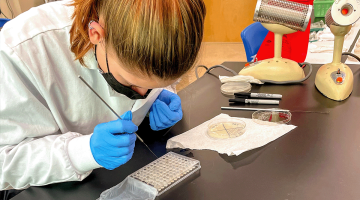Building STEM Knowledge and Confidence Through Traditional Ecological Knowledge
By Caty DuDevoir Maine EPSCoR partner Wabanaki Youth in Science (WaYS) is committed to providing Indigenous youth and communities with hands-on learning opportunities about Indigenous Knowledge and western scientific methods. Fusing western science practices with Indigenous Knowledge allows Wabanaki communities to reclaim spaces in the scientific community. Jason Brough, a Ph.D. student in Anthropology and […]
Read more









